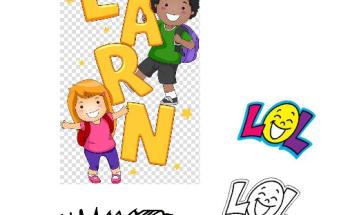
Implementing music in teaching different subjects
Music can move us—our memories and our imaginations
Description
Teachers can incorporate music in their classrooms in a variety of ways to enhance the cognitive processes that are essential to learning. When music is included and embedded across the curriculum, it can promote positive impacts on learning. Music provides motivation and improves mood. Music can promote students’ involvement in topics of study, boost moods, provide memory- enhancing tools, and even expand the brain’s creative potential. Incorporating music across the curriculum can impact mood, motivation, and memory: Music gives opportunities for students who are having a hard time in school to experience the emotional highs of progressive achievement, help them to express their creativity, alleviate boredom in students and prevent them from giving low effort, enhance the experience of pleasure, satisfaction by increased motivation and memory. Incorporating music in teaching has many benefits. It can boost interest about what is to come and bring greater enthusiasm to activities in
Learning objectives
- Understand how music can promote mental and emotional growth.
- Discover music therapy techniques and implement them in the classroom with the purpose of promoting well-being, empathy, and emotional intelligence in students.
- Fe of music in creating meaningful learning and a positive environment.
- Learn the benefits of music for developing cognitive, emotional, and social learning in education.
- Implement music in classrooms for developing creativity, engagement, and meaningful learning.
- Design activities which will include musical resources and ICT.
- Discover the power of creativity and art for creating an inclusive classroom and fostering motivation, autonomy, self-esteem, participation, and collaboration.
- Design creative and expressive activities for an inclusive classroom.
- Identify the benefits of music and art therapy as a preventive strategy.
- Promote cognitive and emotional abilities in schools through Expressive and Creative Art Therapies (ECAT)
Methodology & assessment
Assessment will be carried out prior to the course by means of analysis of participants’ interests, and designing learning scenarios for the particular class each participant works in.
Materials, digital tools & other learning resources
Materials include articles. worksheets, copies of introduced good practice examples, video materials, presentations and links to useful
Certification details
The certificate of attendance issued by the provider contains duration of the course, number of lessons attended, topics covered, skills and competencies obtained, name and reference number of the project, location, name of the expert in charge, signature of the legal representative of the provider and stamp..
If requested - a Europass Mobility Certificate will be issued.
We provide participants with help in completing Learning Agreements, as well as any documents necessary for their organisations
Pricing, packages and other information
-
Price:400Euro
-
Course package content:
The indicated price covers only course fee, intercultural activities and tickets will be arranged with participants on their demand and needs.
-
Additional information:Description of the services and activities included in the course package (such as accommodation, meals, transport) or available at extra cost.
-
Cancellation & changes:
Free cancellation can be accepted at least 4 weeks before the course or in the case of force mayor.
-
Additional information:The options and conditions for change and cancellation, and the policy in case of unforeseen circumstances (force majeure).
Additional information
-
Language:English
-
Target audience ISCED:Primary education (ISCED 1)Lower secondary education (ISCED 2)Upper secondary education (ISCED 3)
-
Target audience type:TeacherTeacher EducatorOther
-
Learning time:25 hours or more
Upcoming sessions
Past sessions
More courses by this organiser

Do's and Don'ts in developing/using a humor philosophy or strategy in teaching



